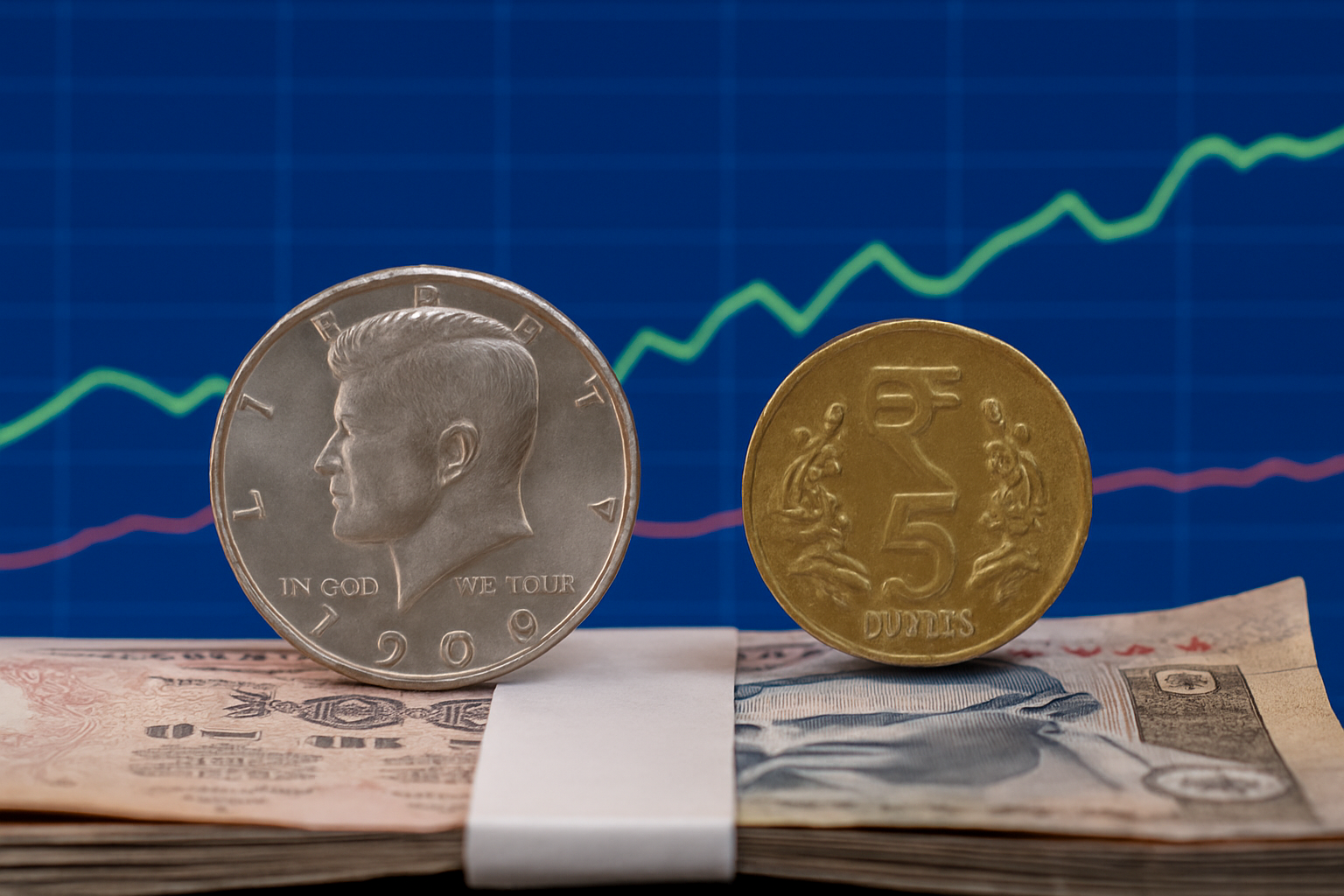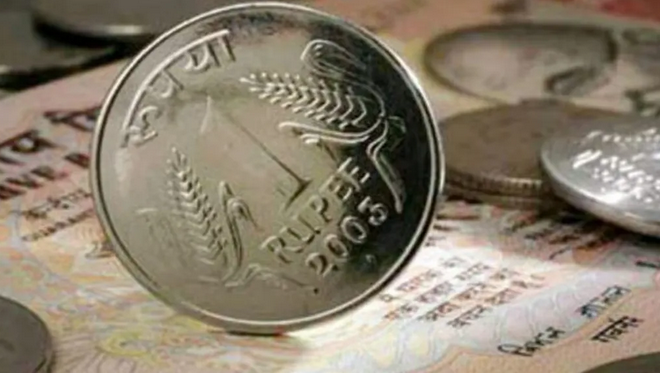Tariff‑Dollar Resilience Rupee: Why the Rupee Opened Strong Despite Tariff Fears
In a surprising twist that caught global markets off guard, the Indian Rupee opened stronger against the U.S. Dollar on August 7, 2025—just days after former U.S. President Donald Trump reignited trade tensions by announcing fresh tariffs on Indian exports. While analysts braced for deeper depreciation and instability, the rupee showed rare strength, trading in the ₹87.70–87.75 range, defying market expectations and broader Asian currency weakness.
This unexpected rebound, now being termed by some experts as “tariff‑dollar resilience”, reflects a unique mix of factors: timely RBI intervention, a softening in global oil prices, and cautious optimism around India’s economic fundamentals.

But how did India’s currency resist the pressure of global headwinds? Why did the rupee outperform its Asian peers even when foreign outflows spiked? And what does this mean for India’s financial stability in the months ahead?
Let’s dive deep into the full picture behind this dramatic rupee recovery—and what it says about India’s ability to withstand external shocks in 2025.
Opening Scene: Calm Amid Tariff Turmoil
Despite U.S. President Trump’s recent tariff escalation—including a 25% tariff effective August 1 on Indian exports and threats of 50% secondary tariffs over Russian oil purchases—the Indian rupee opened notably stronger, surprising analysts. On August 6–7, 2025, it rebounded 0.3% into the ₹87.70–87.75 per dollar range after hitting a five-month low near ₹87.80–87.90.
Key takeaway: Traders describe the move as a rare episode of “tariff‑dollar resilience,” where domestic currency strength defied negative trade sentiment.
What Fuels This Resilience?
1. RBI Intervention and Short Covering
The Reserve Bank of India (RBI) conducted stealth operations in spot and forward markets. This triggered mass short unwinds, helping the rupee climb from its July 31 lows (₹87.74) to around ₹87.30.
Overnight open interest in dollar futures shrank sharply, a sign institutional players bet on stabilization.
2. Export Tariffs and Sector Impact
While a 25% tariff hit sectors like textiles, pharmaceuticals, gems, and electronics, economists believe the impact is not yet debilitating. India’s export volumes are moderately diversified, and current pricing strategies help retain competitiveness.
Additionally, sectors might slightly benefit long-term from a weaker rupee buffering export revenue, though immediate sentiment remains cautious.
3. Oil Price Correction and Trade Curtailment
International crude prices softened from their recent highs—around $72–$75/barrel—helping contain India’s import bill. Reduced demand for forex to pay for imports supported the rupee floor.
Moreover, analysts note that delayed tariff implementation and Trump’s comments hinting at possible trade deals lent relief in sentiment.
4. Relative Currency Behavior in Asia
The Indian rupee outperformed many Asian peers like the Indonesian rupiah, Malaysian ringgit, and Philippine peso, all of which weakened by 0.8–1% in response to the same tariff wave.
India’s current account deficit (~1% of GDP), stable remittances, and investor confidence (despite outflows) helped cushion currency depreciation.

5. Domestic Flows and Investor Appetite
Though foreign portfolio investors (FPIs) pulled over $2 billion (July–August), domestic institutional investors (DIIs) continued supporting equities. Analysts report a modest recovery in mutual fund flows, which indirectly supports rupee demand.
Expert Voices
- Deutsche Bank & Barclays warn the rupee may still drop further by year-end if tariff tensions persist.
- Analysts at Mecklai Financial Services note market nerves: “Downward support near ₹88; RBI sanctuary likely to calm panic.”
- RBI Governor Sanjay Malhotra emphasized maintaining the interest rate at 5.50%, balancing growth and forex stability.
Timeline: From Panic to Stability
| Date | Event |
|---|---|
| Jul 30 | Trump announces 25% tariff; rupee falls from ₹87.10 to ₹87.69. |
| Aug 1 | Rupee bottoms at ₹87.74; RBI intervenes; recovers to ~₹87.30. |
| Aug 4–5 | Asian markets are volatile; the rupee weakens to ₹87.80; equity outflows rise. |
| Aug 6–7 | Rupee stabilizes in ₹87.70–87.75; markets expect RBI to hold on rate. |

Broader Implications
- Short-term relief doesn’t guarantee long-term strength; repeated tariff increments could weaken sentiment.
- India’s forex reserves, robust consumer credit growth, and export models may help, but global risk remains high.
- Policy Signals Matter: Markets are watching RBI’s next rate decision—analysts believe the central bank will prioritize stability over stimulative cuts.
Want real-time updates on forex, tariff shocks, and RBI moves? Subscribe to Vishwa Khabar for actionable insights and commentary.